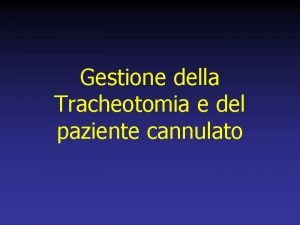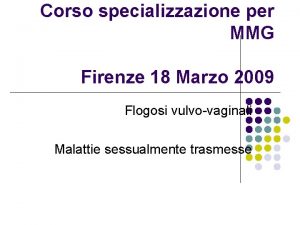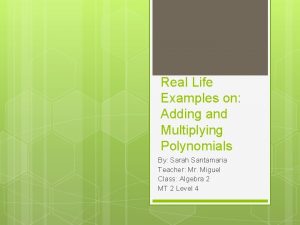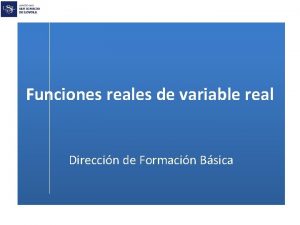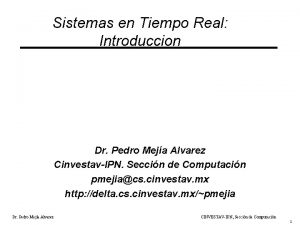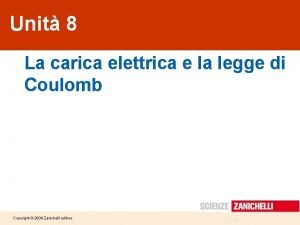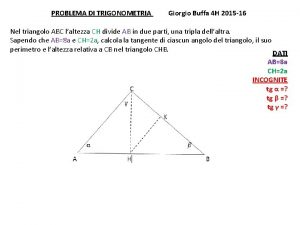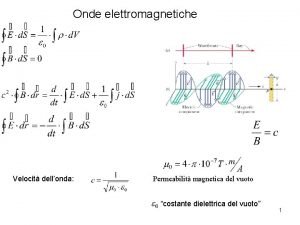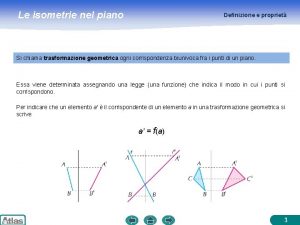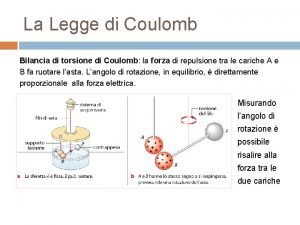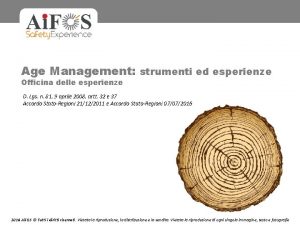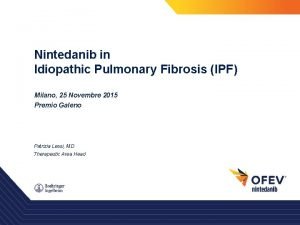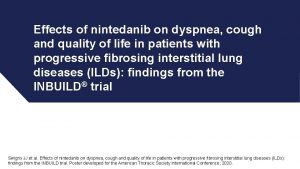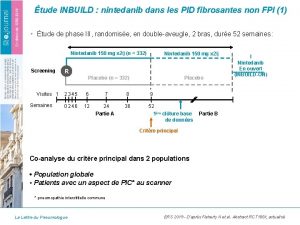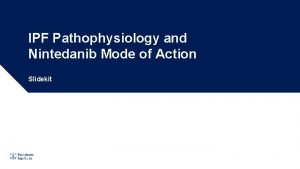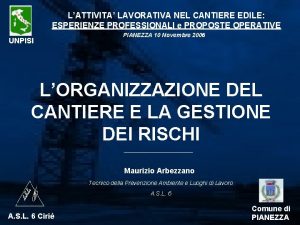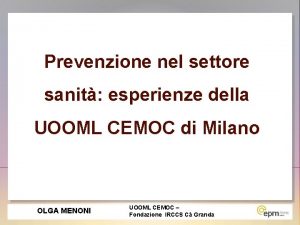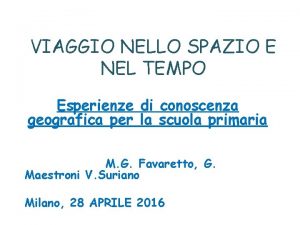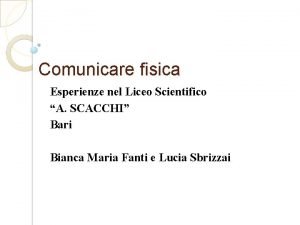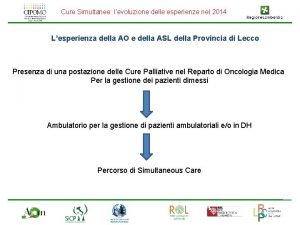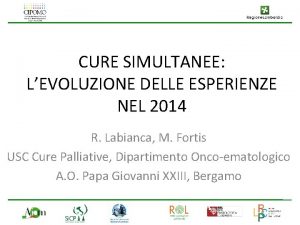Nintedanib in real life esperienze cliniche nel centro

Nintedanib in real life: esperienze cliniche nel centro di Forlì Sara Tomassetti, MD

Conflicts of interest - Boeringher - Roche

1. Center organization & data collection 2. 2015 -2016 IPF Patients’ cohort 3. Drug administration 4. Adverse events 1. Efficacy

1. Center organization & data collection 2. Patients’ cohort 3. Drug administration 4. Adverse events 1. Efficacy

ILD CLINIC data-manager chest physicians: ILDs and Interventional Pulmonology Dr Christian Gurioli Dr Carlo Gurioli Ing. Paola Tantalocco pathologists and radiologists Prof. M Chilosi, Dr. A Cavazza and A. Dubini Prof. Venerino Poletti Dr Claudia Ravaglia Dr Sara Piciucchi and Dr Nicola Sverzellati


2006 -2016 564 IPF

1. Center organization & data collection 2. 2015 -2016 IPF Patients’ cohort 3. Drug administration 4. Adverse events 5. Compliance 6. Efficacy

IPF TREATMENT: Jan 2015 - Feb 2016 184 patients January 2015 NO TREATMENT 18 ESBRIET 95 NINTEDANIB 71

TREATMENT DURATION NINTEDANIB, N=71 patients treated for 7 mo (14 -1) PIRFENIDONE, N=95 patients treated for 11 mo (31 -2) - ongoing treatment, N=49 treated for 17 months (31 -2) - new treatment, N=46 treated for 8 months (14 -2)

PRIOR TREATMENT NINTEDANIB N=71 % ESBRIET 41 58 Progression of IPF 12 29 Photosensivity Rash Gastrointestinal Weight loss Fatigue 9 6 5 6 3 22 15 12 15 7

PATIENTS’ CHARACTERISTICS ESBRIET NONE 71 95 18 69 (85 -53) 53 (75) 19 (27) 49 (69) 3 (4) 45 (63) 20 (28) 6 (8) 66 (80 -46) 77 (80) 68 (79 -50) 6 (33) 25 (26) 68 (72) 4 (4) 10 (55) 8 (45) 0 (0) 65 (68) 28 (29) 2 (3) 10 (55) 6 (33) 2 (12) Familial IPF N(%) 8 (11) 7 ( 7) 9 (50) LC, N (%) 5 (7%) 0 1 (5) NINTEDANIB Age, years Sex, Male N(%) Smoking status Nr. (%) Never Former Current Diagnosis of IPF, N (%) HRCT CRYO SLB

PFT’s PROFILE ESBRIET NONE 71 95 18 FVC % of pred. 65 (134 -28) 79 (111 -50) 91 (122 -71) FVC>90%, N(%) 11 (16) 19 (20) 9 (50) 50% ≤ FVC ≤ 90%, N (%) 48 (67) 76 (80) 9 (50) FVC < 50%, N (%) 12 (17) 0 0 DLco % of pred. 34 (93 -12) 45 (101 -35) 61 ( 86 -41) DLco < 35, N(%) 38 (54) 0 0 NINTEDANIB GAP index Stage I 19 (27) 45 ( 47) 18 (100) Stage II 28 (39) 50 (53) 0 Stage III 24 (34) 0 0

1. Center organization & data collection 2. 2015 -2016 IPF Patients’ cohort 3. Drug administration 1. Adverse events 2. Compliance 3. Efficacy

PRESCRIZIONE






PATIENTS’ EDUCATION: DOSING La dose raccomandata e 150 mg di nintedanib due volte al giorno somministrata a circa 12 ore di distanza. La dose da 100 mg due volte al giorno e raccomandata solo nei pazienti che non tollerano la dose da 150 mg. Se viene dimenticata una dose, la somministrazione successiva deve essere effettuata all’orario previsto alla dose raccomandata. Se viene saltata una dose, il paziente non deve prendere una dose aggiuntiva.

PATIENTS’ EDUCATION: AE Controindicazioni: Ipersensibilita alle arachidi o alla soia DIARREA - Se compaiono feci molli -> dieta stringente - Se compaiono scariche diarrea -> loperamide - Se diarrea persiste con più di 3 scariche al giorno per più di 3 giorni contattare il centro per aggiustamenti della dose TRANSAMINASI è richiesto aggiustamento della dose se vengono rilevati aumenti delle transaminasi (AST o ALT) > 3 ULN

INTERAZIONI Inibitori della P-gp (ketoconazolo, eritromicina, ciclosporina) possono aumentare l’esposizione a nintedanib. Induttori della P-gp (ad esempio rifampicina, carbamazepina, fenitoina ed erba di San Giovanni) possono diminuire l’esposizione a nintedanib.

1. Center organization & data collection 2. 2015 -2016 IPF Patients’ cohort 3. Drug administration 4. Adverse events 1. Efficacy

DRUG RELATED ADVERSE EVENTS NPU Forlì N=71 DIARRHEA 15 (21) INPULSIS* N=638 398 (62) VOMITING 3 (4) 74 (11) WEIGHT LOSS 2 (7) 62 (10) LIVER ENZIME 8 (11) 32(5) *adapted from Richeldi et al, NEJM 2014

MANAGEMENT OF DRUG RELATED ADVERSE EVENTS NPU N=71 DISCONT. INTERR. DOSE REDUCTION UNCHANGED 1 (6%) 8 (50%) 2 (11%) DIARRHEA 15 5 (33%) VOMITING 3 3 (100%) WEIGHT LOSS 2 1 (50%) LIVER ENZIME 8 1 (50%) 8 (100%)

DISCONTINUATIONS TRETAMENT DURATION, 7 mo (14 -1) - In patients who discontinued, N=12 (17%), 3 mo (10 -2) - In patients who continued, N=59 (83%), 8 mo (14 -1) NINTEDANIB discontinuations N=12 DRUG RELATED AE 5 (43) DEATH LUNG TRANSPLANT Patient decision 4 (33) 1 (8) 2 (16)

All 5 drug related adverse events leading to discontinuations were due to severe and persistent diarrhea. All cases were refractory to loperamide treatment and dose reduction.

Diarrhea leading discontinuation, N (%) NPU Forlì N=71 INPULSIS* N=638 5 (7) 28 (4) *adapted from Richeldi et al, NEJM 2014

NOT DRUG RELATED SEVERE ADVERSE EVENTS NINTEDANIB 71 DEATH, N (%) ACUTE EXACERBATION Myocardial Infarction Median survival, mo (range) FVC%pred DLCO% pred GAP III 4 (6) ESBRIET NONE 95 18 4 (4) 0 4 3 0 1 24 (47 -4) 20 (75 -15) 59 (87 -41) 30 (46 -27) 0 2 2 60 (67 -54) 40 (35 -58) 0 4 0

1. Center organization & data collection 2. 2015 -2016 IPF Patients’ cohort 3. Drug administration 4. Adverse events 1. Efficacy

Gruppo NINTEDANIB ESBRIET Globale N totale N. di eventi 71 14 95 32 166 46 N Troncati Percentuale 57 80, 3% 63 66, 3% 120 72, 3% disease progression P=0, 798

Riepilogo dell'elaborazione dei casi Stage mild Group NPU esbriet Globale N totale 19 45 64 N. di eventi 2 10 12 N 17 35 52 Troncati Percentuale 89, 5% 78, 3% 81, 5% disease progression

Riepilogo dell'elaborazione dei casi Troncati Stage Group moderate NPU N totale N. di eventi 28 7 N Percentuale 21 74, 1% esbriet 50 22 28 55, 1% Globale 78 29 49 61, 8% disease progression

CONCLUSIONS NINTEDANIB is safe and well tolerated. THE MOST FREQUENT AE was DIARRHEA. Compared to CRTs diarrhea was less frequent (21% vs 62%), lead to discontinuation in 7%of cases vs 4%). In a real life settings certain adaptations may be required to accommodate specific circumstances (advanced age, frailty, multi-morbidities, polypharmacy, inhadequate monitoring…).
- Slides: 35


